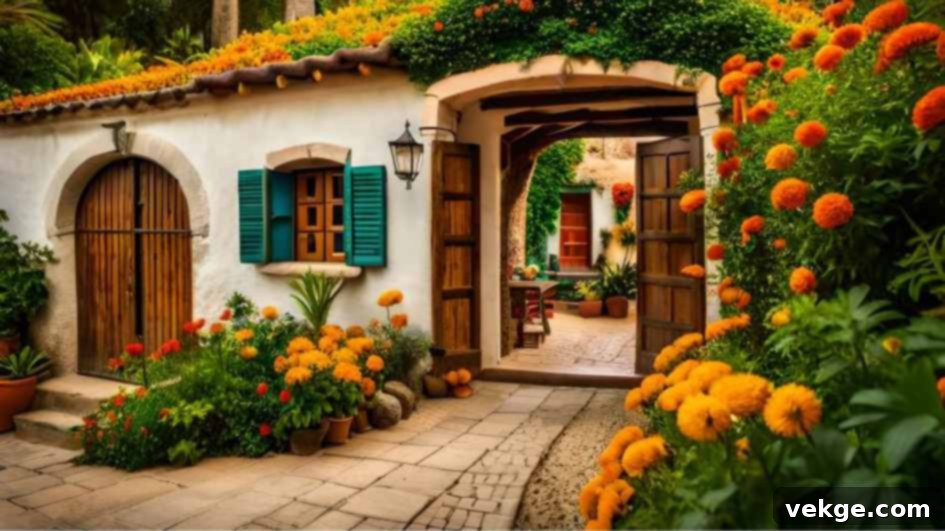Unveiling the True Cost of Building Your Dream Hacienda Home: A Comprehensive Guide
The vision of owning a beautiful hacienda-style home often evokes images of sun-drenched courtyards, elegant archways, and a serene, timeless ambiance. For many, it represents the pinnacle of architectural charm and a connection to rich historical traditions. But as with any significant aspiration, the dream must eventually meet reality, particularly when it comes to the financial investment required. Building or purchasing a home is arguably one of the largest financial decisions you’ll ever make, and a distinctive style like a hacienda comes with its own unique set of cost considerations.
While some initial estimates, often from real estate in certain regions of Spain, might suggest a budget around 60,000 euros for a property, it’s crucial to understand that this figure rarely applies to the construction of a custom “dream hacienda” from the ground up, especially outside its traditional geographical context. Such a project involves far more intricate planning and a substantial budget. Today, we will meticulously delve into the romantic allure of hacienda homes and thoroughly decode the myriad factors that determine their actual construction cost. Our goal is to equip you with the knowledge to make informed decisions, transforming your architectural dream into a tangible, cherished reality.
Decoding the Complex Cost Structure of Hacienda-Style Homes
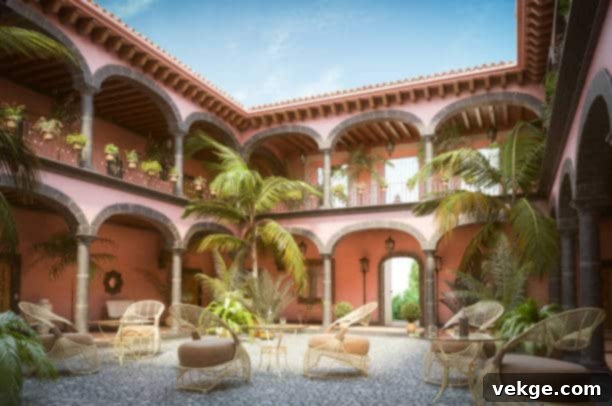
Hacienda-style homes are deeply rooted in the traditional architecture of Spain and Mexico, reflecting centuries of cultural heritage and environmental adaptation. These enchanting estates typically feature elements designed for warm climates, such as bright sunshine, expansive open courtyards (patios), and thick walls that provide natural cooling. Key architectural hallmarks include iconic red handmade clay roof tiles, striking white stucco walls, often smaller, strategically placed windows, and grand interior or exterior courtyards that serve as the heart of the home.
The challenge and increased cost often arise when attempting to replicate this specific architectural logic in regions whose climate and available resources differ significantly from the hacienda’s origins. For instance, in many parts of North America or Europe, the weather patterns are not inherently conducive to the traditional open-air design and material choices of a hacienda. This climatic discrepancy often necessitates adaptations in construction, which can lead to a substantial surge in building expenses.
Beyond climate, several other critical factors contribute to the escalating cost of bringing a hacienda vision to life. The geographical location of your property, its overall size and footprint, the selection of authentic construction materials, and the demand for intricate, handcrafted accents can collectively amount to a considerable fortune. Features like custom wrought-iron windows, bespoke decorative tilework, and the construction of traditional Spanish-style courtyards are highly specialized and naturally drive up the budget. Moreover, securing the services of skilled laborers who possess expertise in these traditional building techniques can be particularly challenging and expensive in today’s competitive construction market.
But the financial planning doesn’t end there. Depending on where your property is situated, you must also factor in the costs associated with necessary house amenities, landscaping that complements the hacienda aesthetic, and, crucially, all legal permissions and permits required for construction. Therefore, before embarking on the exciting journey of building your dream hacienda home, it is absolutely essential to develop a meticulous and clear financial plan.
Eight Key Factors Influencing the Cost of Your Hacienda Home
To help you navigate the complexities of budgeting for your Spanish-style abode, here are eight crucial factors that will significantly influence the final cost of building a hacienda-style home:
1. Proximity to Urban Locations
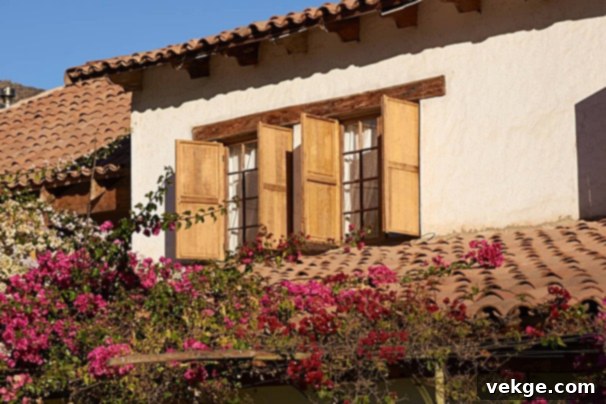
The geographical setting of your future hacienda is often the very first and most impactful cost determinant. Properties situated in or near urban centers invariably command a higher valuation compared to rural or countryside lands. Building a hacienda in an urban area, with its convenient access to city amenities, infrastructure, and services, will naturally incur a significantly higher cost for land acquisition alone. Furthermore, urban construction often faces more stringent building codes and potentially higher labor costs due to increased demand and cost of living.
Conversely, opting for a countryside property to construct your Spanish-style home can result in an immediate and substantial reduction in land costs. Rural locations may offer larger plots for less money, allowing for more expansive hacienda designs. However, it’s vital to consider other factors: access to utilities (water, electricity, sewage) might be more challenging and costly to establish in remote areas, and transportation costs for materials and labor could increase. Always consult with a local real estate agent and experienced builder who can provide tailored advice based on specific local property trends and development costs.
2. Land and House Size
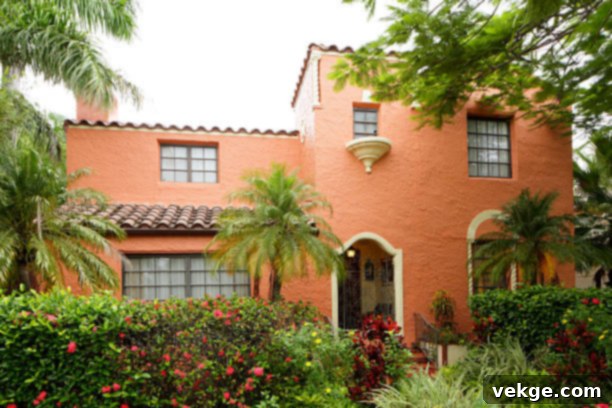
Historically, Spanish haciendas were grand estates built on vast expanses of land, with their architectural aesthetics intrinsically linked to local climate, lifestyle habits, and readily available construction materials. These sprawling properties often featured not just the main residence but also extensive gardens, multiple courtyards, stables, and other outbuildings, embodying a self-sufficient lifestyle.
In contemporary life, especially in many modern American or European settings, maintaining such a large estate can be both impractical and prohibitively expensive. The fundamental rule of construction holds true: the larger the land area and the more extensive the house, the higher the overall construction cost. Every additional square foot of living space, every extra patio, and every elaborate courtyard demands more materials, more labor hours, and more attention to intricate architectural details. These elements collectively inflate the overall cost of building your dream hacienda. Consequently, if your property is larger and you aim for a more expansive hacienda design, you should anticipate a proportionally higher investment.
3. Raw Materials for Construction
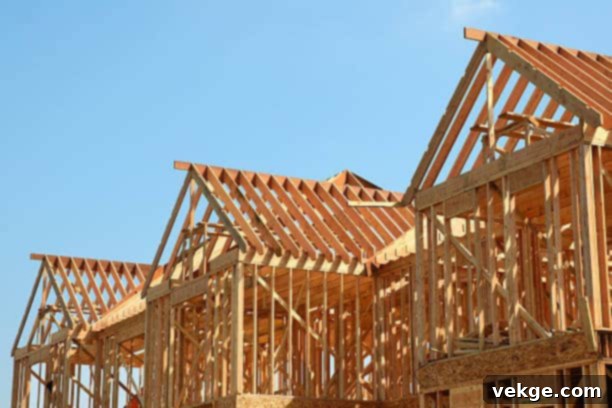
Authenticity in hacienda construction often dictates the use of specific, high-quality raw materials such as traditional red clay roof tiles, stucco or adobe for walls, and hand-painted ceramic or terra cotta floor tiles. These materials are generally premium, often handmade, and traditionally intended for homes in warmer, arid regions. Their specific properties lend themselves well to climate control in such environments.
However, employing these traditional premium materials can become economically unfeasible or even functionally inappropriate in regions with predominantly cooler, wetter, or vastly different climates. For instance, adobe walls might require significant weatherproofing in humid areas, and clay tiles might need extra reinforcement for heavy snow loads. Furthermore, these authentic materials may not be widely available in many parts of the world due to low local demand, requiring them to be custom-ordered or imported. This scarcity, coupled with transportation costs and potential customs duties, dramatically inflates the budget. While using alternative, locally sourced, and climate-appropriate materials can offer cost savings, deviating from authentic raw materials will inevitably impact the traditional look and feel of your Spanish-style home.
4. Hacienda House Features
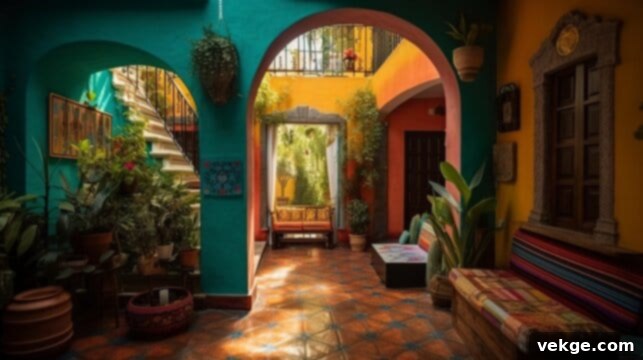
Beyond basic construction, the distinctive features that define a hacienda home significantly impact its cost. Historically, haciendas were also a reflection of an owner’s financial and social status, particularly among the wealthier Spanish elite who owned vast countryside estates. This heritage often translated into rich and elaborate construction details, showcasing craftsmanship and artistry.
Incorporating these traditional Spanish features into a modern home demands a greater investment. Elements such as large, romantic archways, custom-designed round or uniquely shaped doors, intricately detailed wrought-iron windows, balconies, and security grilles, and decorative tile accents are all bespoke elements. These are not off-the-shelf components; they require skilled artisans for their design, fabrication, and installation. Custom-carved wooden beams, hand-painted ceramic tiles for stair risers or kitchen backsplashes, and the inclusion of fountains or bespoke fireplaces all contribute to a higher cost. The more authentic and detailed you wish your hacienda to be, the more you will need to budget for these exquisite, labor-intensive features.
5. Labor Charges for Building the House
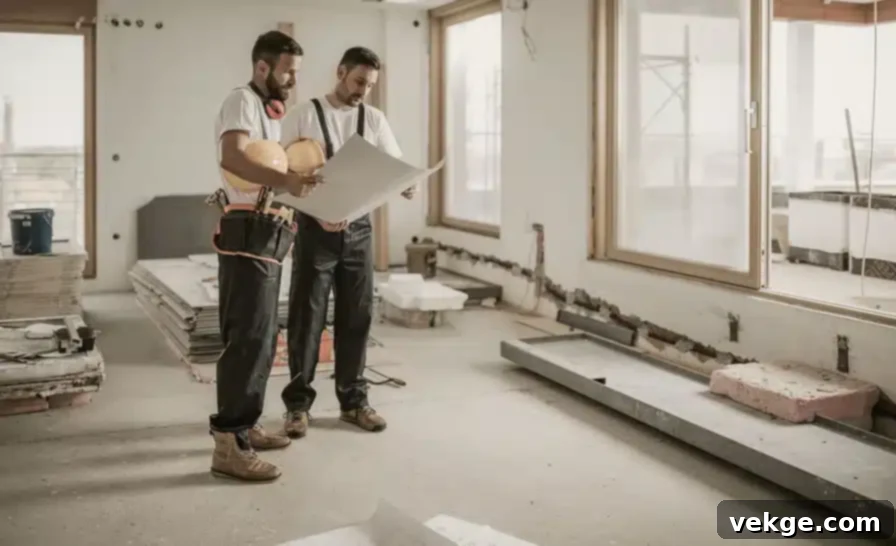
The cost of labor is a significant component of any construction project, and it can be particularly elevated for hacienda-style homes. This is largely due to the specialized skills required. Authentically skilled laborers—masons adept at stucco and adobe, expert tile setters for intricate patterns, and master ironworkers for custom grilles—are becoming increasingly rare, especially in regions far from the traditional origins of hacienda architecture. The dwindling modern-day demand for such lavish, highly detailed traditional homes means that fewer craftspeople specialize in these techniques.
Consequently, if you are fortunate enough to find experienced and skilled hacienda constructors and artisans, their charges will undoubtedly be higher than general construction labor. These professionals command a premium for their specialized expertise, their precision work, and the time-intensive nature of traditional craftsmanship. Building a larger home with a commitment to maintaining authentic designs will naturally require more labor hours from these highly paid specialists, further increasing the overall construction cost. This factor alone can significantly impact your budget, making careful selection of your building team paramount.
6. Design Complexity of Homes
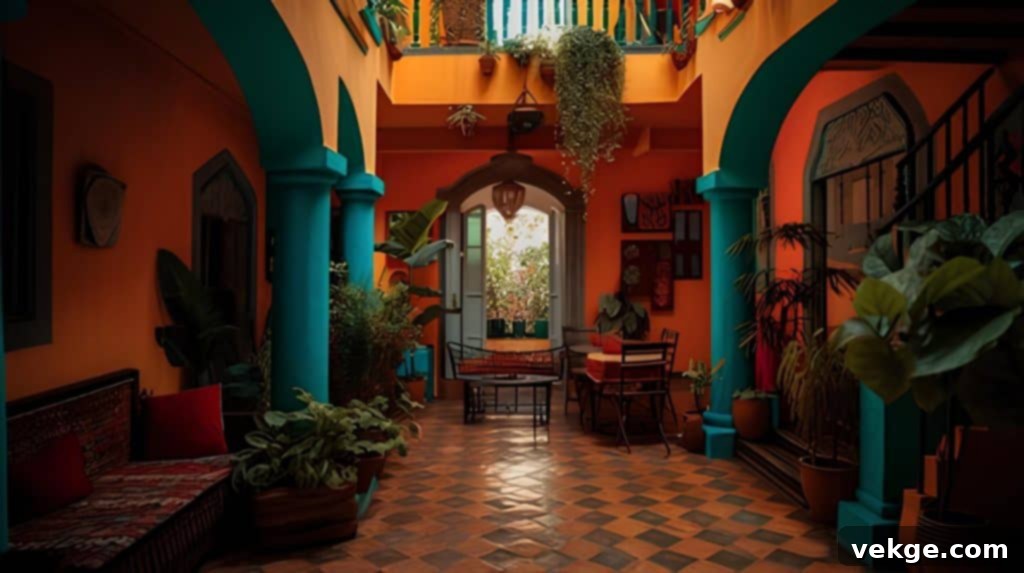
The architectural complexity is another significant driver of hacienda construction costs. Unlike the often rectilinear and standardized designs of many modern homes, traditional Spanish haciendas are characterized by intricate detailing, varied rooflines, and unique layouts that require meticulous planning and execution. This level of design sophistication naturally demands more resources and skilled labor.
Complex design elements that contribute to increased costs include a multiplicity of exposed wooden beams, elaborately decorated archways (both interior and exterior), custom tile-work that might include hand-painted patterns on floors, walls, and stair risers, and the integration of water features such as fountains and swimming pools within or around central courtyards. Each of these features necessitates specialized design expertise, precise measurements, and often artisanal craftsmanship. The more of these intricate details you wish to incorporate into your hacienda, the more the design and construction costs will escalate. Engaging an architect with specific experience in Spanish Colonial or Hacienda Revival styles can be invaluable, though their specialized fees will also be part of this increased design complexity budget.
7. Legal Documentation and Professional Fees

Just like any other substantial building project, constructing a hacienda involves a labyrinth of legal documents, permits, and professional consultations, all of which contribute significantly to the overall budget. These are non-negotiable costs essential for ensuring your project is compliant and safely executed.
Key legal and professional expenses typically include: obtaining a zoning permit to ensure your land use is appropriate; securing a construction permit for the actual building work; environmental safety permits, especially if your property is near protected areas or requires specific impact assessments; and various other “hidden” permits that might be unique to your local municipality (e.g., for septic systems, well drilling, or specific utility connections). Beyond permits, you will also incur fees for essential professionals such as architects (for design and blueprints), structural engineers (for safety and integrity), land surveyors (for precise boundary and topography mapping), and possibly legal counsel to navigate complex property laws or contracts. The cost of obtaining all necessary legalities and engaging these professionals can vary dramatically based on your location and the complexity of your project. Therefore, it is always imperative to consult your local real estate officers, building department, and legal experts early in the planning process to avoid unexpected budget inflations or costly delays.
8. Decorations and House Amenities
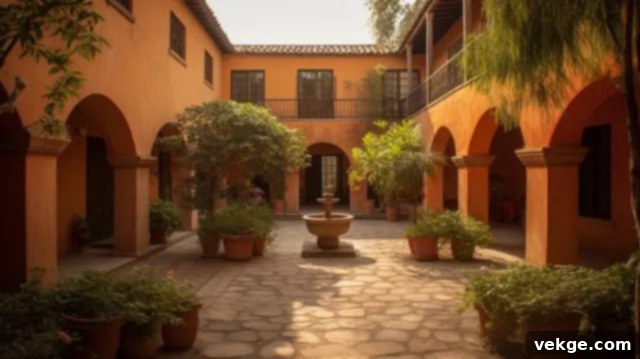
The final, but by no means least significant, category of cost-deciding factors encompasses decorations, interior finishes, and essential house amenities. While often overlooked in initial budget discussions, these elements are crucial for transforming a structure into a livable, comfortable, and truly “dream” home. Installing fundamental utilities like plumbing for fresh water and sewage, comprehensive electrical wiring, and climate control systems (HVAC) are significant expenses. Beyond the basics, consider the quality of interior wall finishes, custom cabinetry that complements the hacienda style, and the selection of appliances, which can range from standard to high-end luxury models.
Furthermore, furnishing your hacienda with pieces that resonate with its traditional aesthetic can be a considerable investment. Landscaping, often integral to the hacienda experience with elements like ornate fountains, carefully selected traditional plantings (e.g., citrus trees, bougainvillea), and thoughtfully designed pathways and outdoor living areas, also adds to the cost. The choices made in these areas directly reflect your desired lifestyle and level of luxury. Whether you opt for simple, elegant finishes or lavish, custom-designed interiors, these details accumulate and ultimately determine the final price tag of your bespoke hacienda home. A holistic approach to budgeting, including these finishing touches, is vital for a realistic financial plan.
Conclusion: The Investment in Your Timeless Hacienda Dream
In summation, it’s clear that bringing a dream hacienda-style home to life is not a low-budget endeavor; it represents a significant, long-term investment. While some initial discussions might mention figures like 40,000 to 60,000 euros, it’s crucial to clarify that such estimates typically pertain to purchasing a very basic property, a small plot of land, or undertaking minor renovations in specific, less expensive regions. Building a custom, authentic “dream hacienda” from the ground up, especially outside its traditional context and with the intricate details highlighted throughout this guide, will undoubtedly require a far more substantial budget, often ranging from several hundred thousand dollars or euros to well over a million, depending on scale, location, and the level of luxury desired.
The journey to create your hacienda is influenced by a multitude of critical factors: the coveted location of your property, the expansive land and house size, the acquisition of authentic construction materials, the invaluable labor of skilled artisans, the intricate complexity of the architectural design, essential legal documentation, and finally, the selection of tasteful decorations and modern house amenities. Therefore, it is absolutely essential to develop a thorough and realistic financial plan, ideally with the guidance of professional architects, builders, and real estate experts who specialize in this unique architectural style.
Despite the considerable investment, the enduring traditional and cultural luxury embodied by a hacienda home offers unparalleled rewards. It is a timeless asset that provides not just a dwelling, but a lifestyle rich in history, beauty, and tranquility. A meticulously planned and beautifully executed hacienda is more than just a house; it’s a cherished lifetime legacy that offers immense satisfaction and a unique connection to a rich architectural heritage.
What other additional costs or considerations do you think are vital when planning to build a hacienda home? Share your insights and experiences in the comments below!
